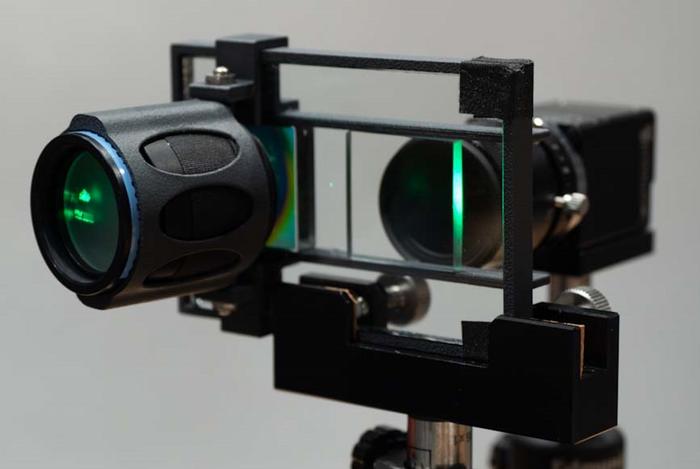Augmented reality technology has captivated both consumers and industry professionals alike by blending real-world views with digital overlays. However, the widespread adoption of AR glasses has faced significant hurdles, primarily due to their inherent heaviness linked to integrated batteries and electronic components. Despite the integration and development of various hardware technologies over the years, AR glasses remain uncomfortably heavy for prolonged use and lack sufficient computational capacity, battery longevity, and visual brightness necessary to create an enjoyable user experience.
The burgeoning potential of AR glasses lies in their ability to blur the lines between physical and digital worlds, enabling users to interact with virtual elements seamlessly. Yet, the prevailing AR glasses fail to achieve the desired comfort and practicality, making them impractical for daily use. Traditional models are not only physically awkward but also often lack the necessary capabilities to provide high-resolution images under varying lighting conditions. This has obstructed their likelihood of being embraced as commonplace consumer gadgets.
To address these challenges, the research team from the University of Tokyo, along with their collaborators, has developed a novel pair of AR glasses that harnesses the beaming projector method to receive images rather than generate them internally. This transformative design aims to create a lightweight optical system that circumvents the need for onboard power supplies, thus lowering the total weight and enhancing the visual quality delivered to the user.
According to Yuta Itoh, the project associate professor at the Interfaculty Initiative in Information Studies at the University of Tokyo and the lead author of the research paper, this innovative approach enables the glasses to receive projected images efficiently. By minimizing onboard components, the AR glasses can maintain high-quality visuals while ensuring a more comfortable user experience. Traditionally, AR glasses that utilized the beaming display strategy were significantly limited by the angles at which they could capture light, confining users to just five degrees of movement from the light source.
In a notable advancement, this research team successfully augmented the usability of light-receiving AR glasses by incorporating a diffractive waveguide. This technology allows for improved light direction, thereby drastically increasing the head orientation capacity from the previous five degrees to nearly 20-30 degrees. Such flexibility empowers users to move freely without sacrificing the stability or clarity of the AR visuals they experience.
The innovative light-receiving mechanism consists of two vital elements: screen and waveguide optics. Initially, projected light first encounters a diffuser that evenly distributes it towards a lens, which then targets the waveguides integrated within the glasses’ material. After passing through the diffractive waveguide, the image light is redirected towards fine gratings situated at the eye surface of the glasses. These gratings serve a crucial role in extracting and directing the image light into the user’s eyes, thereby producing a vivid AR image.
To validate their technology, the researchers constructed a prototype and projected a detailed 7-millimeter image onto the glasses from a distance of 1.5 meters. Notably, they employed a laser-scanning projector capable of angling between zero and 40 degrees from the projector’s point of origin. The results were promising, as the incorporation of gratings significantly expanded the angle of acceptable image quality reception, allowing the AR glasses to maintain high-quality visuals from about five degrees to an impressive range of 20-30 degrees.
While this new technology for receiving light drastically enhances the practicality of AR glasses, the research team acknowledges that further tests are essential. Future endeavors will aim at augmenting wearability and integrating head-tracking features into the design. Such features would assure that projected images remain aligned with the user’s viewing angle, empowering users with an even more engaging AR experience.
Plans for further research include setting up testing environments that can track the positioning of light-receiving glasses while steerable projectors dynamically adjust to beam images accordingly. This would provide an immersive experience suitable for real three-dimensional environments. Additionally, the team intends to explore various light sources with improved resolutions to elevate the quality of images rendered by the AR glasses. Furthermore, they aspire to overcome existing obstacles in their current designs such as ghosting effects, restricted fields of view, monochromatic imagery, the challenge of integrating prescription lenses, and limitations to two-dimensional displays.
As these innovative designs come to fruition, the significant evolution of AR technology stands to reshape numerous sectors from gaming to education and healthcare. The simplification and improvement of AR glasses are not merely technological achievements; they may signal the dawn of a new era where digital overlays seamlessly enrich our physical reality. By bridging the gaps in usability and practicality, the scientists are venturing closer to realizing the full potential of augmented reality, inviting everyday users to engage with the digital world in transformative new ways.
In the coming months, the research will continue to refine these developments, signaling a move toward more sophisticated and accessible AR technology. The research team’s commitment to innovation presents an exciting frontier in a field that promises to enhance how individuals experience their surroundings changed by digital interaction. The future of AR glasses looks promising, inviting a broader audience to embrace a fully realized augmented reality experience.
Subject of Research: Augmented Reality Glasses
Article Title: Slim Diffractive Waveguide Glasses for Beaming Displays with Enhanced Head Orientation Tolerance
News Publication Date: March 8-12, 2025
Web References: N/A
References: N/A
Image Credits: Yuta Itoh, Tomoya Nakamura, Yuichi Hiroi, Kaan Akşit
Keywords
Augmented Reality, Beaming Display, Diffractive Waveguide, University of Tokyo, Lightweight Glasses, Projection Technology, User Experience, Technology Advancement.
Tags: advancements in wearable technologyaugmented reality glasses innovationbeaming display technology for ARblending physical and digital worlds with ARenhancing AR visual experiencefuture of augmented reality accessoriesIEEE VR conference 2025 highlightsimproving battery life in AR devicesinternational collaboration in AR researchlightweight AR technology solutionsovercoming AR glasses weight issuesuser-friendly augmented reality devices





